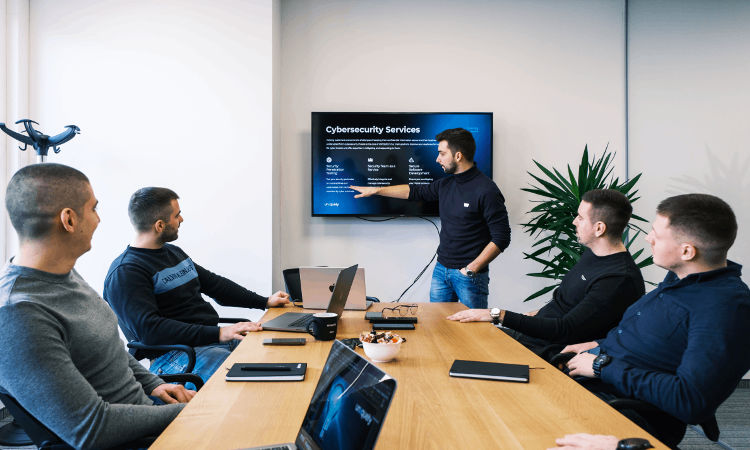Securing your business’s online presence goes far beyond financial implications; the trust your clients place in your brand is also at stake. The increasing frequency and sophistication of cyberattacks demand that every organization, regardless of size, remains vigilant. A proactive approach to cybersecurity, starting with a comprehensive checklist, ensures that no critical aspect of your defense is overlooked. This post provides clear and actionable steps for protecting your digital assets, fortifying your security protocols, and minimizing the risks of breaches before they can compromise your operations.

1. Introduction to Cybersecurity Checklists
A cybersecurity checklist ensures that no key steps are missed when securing your business’s digital infrastructure. It provides a structured way to maintain compliance, enforce security protocols, and reduce the risk of cyber threats. By regularly following a well-built checklist, your team can stay proactive and consistent in their security efforts, which is crucial in a rapidly changing threat landscape.
2. Key Components of a Cybersecurity Checklist
Every organization has unique needs, but the following elements should be foundational in any cybersecurity checklist:
Regular Software Updates and Patch Management
Every piece of software, whether new or old, is vulnerable. The longer software has been on the market, the more time attackers have had to inspect it for weaknesses. That’s why older software tends to have known vulnerabilities. Regular updates and patches are vital for closing these security gaps. Patch managementshould go beyond just installing updates; it should include regular penetration testing to identify potential weaknesses. This testing not only helps secure your systems but also ensures that vulnerabilities are found before they can be exploited. Businesses that invest in penetration testing can significantly reduce their exposure to cyber threats.
Employee Training and Awareness Programs
No matter how robust your security measures are, the human factor is always the weakest link in cybersecurity. One phishing email or social engineering attack can bring down even the most secure system. That’s why employee training and awareness should be taken as seriously as any technical safeguard. Proper training helps employees recognize phishing attempts and other malicious tactics, reducing the likelihood of a breach. Regular sessions keep security top of mind, ensuring that every team member understands their role in protecting the company. Failing to prioritize training can leave your business vulnerable, as one wrong click could compromise your entire operation.

Data Backup and Recovery Procedures
Backing up your data regularly is essential for business continuity in the event of a cyberattack, such as ransomware. Without proper backups, you could be forced to pay ransom or face severe operational downtime. Ensure your backups are secure and not connected to your main network to prevent them from being compromised during an attack. Additionally, regularly test the recovery process to ensure it works as expected when it’s most needed.
Access Controls and Authentication Measures
Controlling access to sensitive information is crucial. Implementing role-based access controls (RBAC) ensures that employees only have access to the data necessary for their roles, reducing the risk of insider threats or accidental exposure. Equally important is the use of multi-factor authentication (MFA). Even if an attacker gains access to someone’s credentials through phishing or other methods, MFA can prevent the attack from succeeding. By requiring an additional layer of verification (such as a code from a phone), MFA ensures that stolen credentials alone aren’t enough to breach your systems. In a world where password leaks are common, MFA is one of the most effective ways to stop attackers in their tracks.
Incident Response Plans
No system is 100% secure, which is why having a detailed incident response plan is essential. This plan should outline clear steps to follow when a security breach occurs, ensuring that your team can act quickly to contain and mitigate the damage. Regularly test and update this plan to make sure it remains effective as your systems and the threat landscape evolve.
3. Integrating Checklists into Daily Operations
A cybersecurity checklist isn’t something to be used once and forgotten. For it to be effective, it must be integrated into the daily operations of your business. Using task management tools like Trello, Asana, or Jira can help your team stay on top of cybersecurity tasks, ensuring nothing slips through the cracks. Additionally, these tools allow you to regularly review and update your checklist to adapt to new threats.
4. Celebrating Cybersecurity Awareness Month
October is Cybersecurity Awareness Month, making it the perfect time to assess and enhance your security practices. Use your checklist to review current protocols, address any gaps, and make necessary improvements. Sharing these insights with your team helps create a culture of security, where everyone plays a role in keeping your organization safe from cyber threats.
Conclusion
Cybersecurity is an ongoing challenge, and businesses must stay ahead of emerging threats. A well-structured cybersecurity checklist serves as a crucial tool for maintaining a strong defense and ensuring the protection of your digital assets. By regularly updating and integrating this checklist into daily operations, your organization can reduce vulnerabilities, improve incident response, and foster a culture of security across the entire team. Ultimately, staying vigilant and proactive is the key to safeguarding your business’s reputation and maintaining the trust of your clients.
About Author:
Filip Kecman, an Offensive Security Engineer specializing in penetration testing, cybersecurity analysis, and application security, with a keen focus on web applications and networks. Using a blend of manual and automated techniques, he not only identifies vulnerabilities but delivers actionable recommendations to fortify systems. Filip’s commitment to industry standards and continuous learning keeps him ahead

